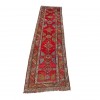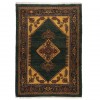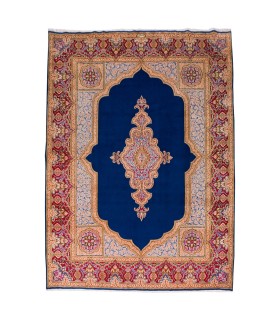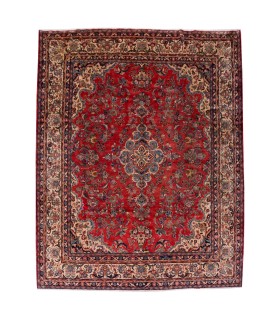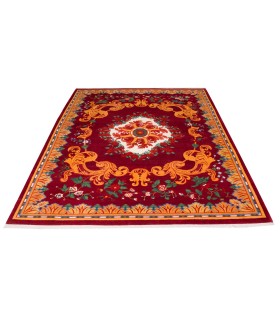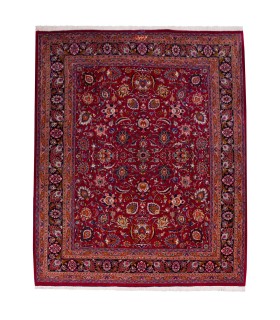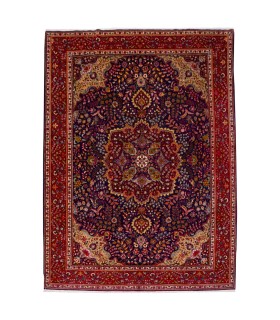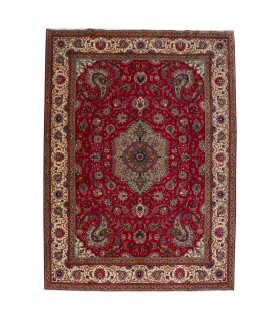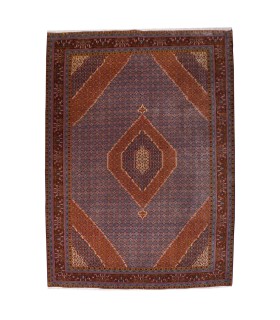This beautiful carpet is from Azerbaijan. Azerbaijani rugs are a product of Azerbaijan and Iranian Azerbaijan, an ancient center of carpet weaving. The Azerbaijani rug is a traditional handmade textile of various sizes, with dense texture and a pile or pile-less surface, whose patterns are characteristic of Azerbaijan's many carpet-making regions. Traditionally, since ancient times the carpets were used in Azerbaijan to cover floors, decorate interior walls, sofas, chairs, beds and tables. Carpet making is a family tradition transferred orally and through practice, with carpet making and rug making being predominantly a women's occupation. In the past every young girl had to learn the art of weaving carpets, and the carpets she wove became a part of her dowry. In the case of a newly married son, it was his mother who wove a large rug for his new household. Starting a new carpet meant a feast, but the completion of a rug meant an even greater celebration for the family. In the old days finished carpets were laid out in front of the house so that passers-by with the weight of their feet could make them even tighter than they had already been knotted. For the traditional process of carpet and rug making, men sheared the sheep for the wool in the spring and autumn, while women collected dyestuffs and spin and dye yarn in the spring, summer and autumn. Azerbaijani carpets are classified under four large regional groups, i.e. Quba-Shirvan, Ganja-Kazakh, Karabakh, and Baku.
Geometrically patterned Persian carpets, are decorated with linear elements composed of vertical, horizontal and diagonal lines, and are formed by a repetition of the same motif. The motif of a carpet can be used to determine the particular tribe, or place of origin.
Dying method of material of this carpet was traditional and all dyes which used were natural dyes. Colors of natural dyes are softer and more natural looking and longer lasting than their synthetic counterparts. Sometimes natural dyes contribute to Abrash. Since all-natural dyes are not chemically or synthetically based or fixed, no two dye lots can ever be exactly the same.
Some examples of natural dyes are:
Plant Dyes: saffron, Isparuk, oak apples etc. for yellow colors; indigo for blue; madder roots (depending on age) for various red tones, as well as henna leaves and flowers, etc.
Animal Dyes: the most important of these is cochineal and in earlier times, Indian lac, both obtained from insects. A purple dye obtained from snails was Important in ancient times.
Mineral Dyes: Karaboja for black - also iron oxide; iron sulphate for brown; copper sulphate for green, etc.
In addition, however, colors will vary with the wool quality, e.g., its fat content, as well as with the chemical composition of the water which is used for preparing the dye baths.
Data sheet
- Type
- Town/Village
- Age (Circa)
- 1900s-1910s
- Origin
- Azerbaijan
- City
- Azari
- Material
- 100% Wool
- Dyes
- Natural / Vegetable dyes
- Layout
- Repeated Medallion
- Design
- Geometric
- Border Color
- Red
- Approx. Pile Height (cm)
- Less than 1 cm
- Shape
- Runner



















